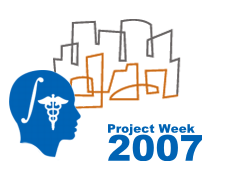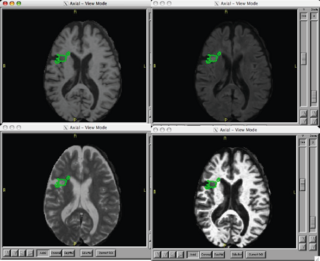Difference between revisions of "ProjectWeek200706:LesionClassificationInLupus"
From NAMIC Wiki
Hjbockholt (talk | contribs) |
Hjbockholt (talk | contribs) |
||
| Line 16: | Line 16: | ||
<h1>Objective</h1> | <h1>Objective</h1> | ||
| − | Our goal is to | + | Our goal is to automatically, or with little or no manual human rater input correctly tissue classify our data-sets into gray, white, csf, and lesion classes. |
</div> | </div> | ||
Revision as of 11:39, 25 June 2007
Home < ProjectWeek200706:LesionClassificationInLupus Return to Project Week Main Page |
Key Investigators
- MIND/UNM:
- Jeremy Bockholt
- Mark Scully
Objective
Our goal is to automatically, or with little or no manual human rater input correctly tissue classify our data-sets into gray, white, csf, and lesion classes.
Approach, Plan
Our approach is to ...
Our plan for the project week is to ...
Progress
This section will get filled out at the end of the Project week.
References
Additional Information
Using an exemplar case that has already been processed using non-NAMIC kit tools:
- Use existing NA-MIC kit to coregister T1, T2, Flair, CBV, CBF, and MTT
- Use the EM Segment in slicer 2-3.X to classify grey, white, csf, and white matter lesion
- Summarize the volume and location of lesions
- Measure the intensity of co-registered CBV, CBF, and MTT images within lesion and meaningful non-lesion regions of the brain
- If time permits, co-register DTI data and generate scalars such as FA, MD, RD, and AD
- If time permits, measure DTI scalars within normal white matter and within white matter lesions.
